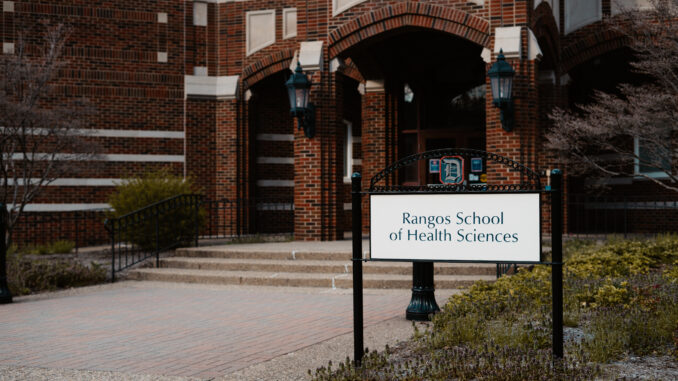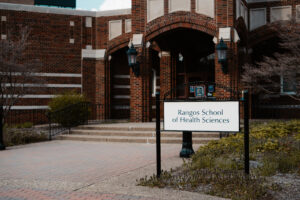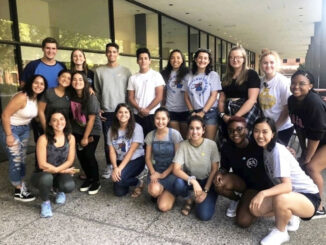

Katia Faroun & Gillian Fitzgerald | The Duquesne Duke
04/08/2021
Everyone has different lived experiences that are unique to them as individuals of unique backgrounds, but understanding these differences is what actually makes a difference — especially when it comes to health care.
Because of this, Duquesne health science professors make it one of their key objectives to teach on racial sensitivity and bias awareness in order to prepare students for interacting with patients of different racial, socioeconomic, gender and religious backgrounds in their careers.
For School of Nursing assistant professor and undergraduate programs chair Torrie Snyder, this bias awareness training starts right away, with first-semester nursing students already being lectured on how to treat patients of different backgrounds.
“We want to definitely discuss race and how equity is really important in nursing,” Snyder said. “A lot of students may not see how race affects them, especially if you’re not a person of color and you have your own experiences as others, so we want to expose our students to that.”
However, when it comes to teaching students — especially ones without much exposure to different cultures or people of diverse backgrounds — there’s a need to recognize the gap between the knowledge and exposure they come to the classroom with and the level of awareness needed in their respective fields. What’s important to Snyder is meeting students where they are and helping them recognize the biases they may be carrying with them.
“First we try and allow our students to be aware of their own biases, and then how can we get a handle on that and make sure that we aren’t allowing our biases to interfere with care that’s being provided,” Snyder said.
Educating students on how to recognize their biases doesn’t only happen in nursing school lectures. Physical therapy professor Gregory Marchetti is dedicated to helping students in the Rangos School of Health Sciences not only acknowledge the biases they may have, but also to helping the students navigate them and learn how to not let them control how they treat their patients.
“I do think it really starts with checking your own biases and recognizing that no matter how hard you try, you’re not going to completely leave them out of those interactions,” Marchetti said.
There’s no way to leave equity out of health care, especially in the United States, according to Snyder and Marchetti. Because of the diverse backgrounds patients have — whether it be their race, their culture, their religion or just their personal lived experiences — no two patients are the same, and no two patients should be treated in the same way.
“The biggest pet peeve of mine is when I hear nurses or people in my profession say, ‘I treat all my patients the same,’” Snyder said. “That’s not a good thing.”
Each person has different needs as an individual, so treatment shouldn’t be solely based on physical wellbeing, but emotional wellbeing too. Marchetti believes that training and teaching future health care providers to recognize that is imperative in a system that was created around treating white males — something that is considered the norm.
“We have to be more willing to have that cultural connection and be willing to meet each other where we are culturally, and understand how particularly the white culture has played the dominant role in a system that nonwhite people are trying to function in,” Marchetti said.
It’s important to note, according to Marchetti, that white health care professionals will never be able to fully understand the experiences of their patients with different social, cultural and racial backgrounds. But a key way to bridging this cultural gap between patient and provider is by listening and having experiences working with patients of different backgrounds.
“It takes listening, it takes interacting with people of different cultures and different ethnic backgrounds and trying to understand their needs,” Marchetti said.
The schools of health care at Duquesne dedicate themselves to making sure their students graduate not only being aware of this gap, but end up using this knowledge to better treat patients of all different backgrounds.
Within the nursing and health sciences schools, diversity and inclusion committees work with faculty and the student body to create learning opportunities, such as in-services and expert-led series surrounding specific topics, including race or gender equity. Other students collaborate with professors, such as Marchetti, to do research and presentations on equity in health sciences, earning them that out-of-classroom experience that professors believe is so important.
“We invite experts in that can enhance our knowledge on these various topics when it comes to race, gender and culture, and that’s one of the ways we are trying to make a change,” Snyder said. “And these are things that, for example, I may not be totally comfortable with, but in order to become comfortable, I have to learn and I have to educate myself.”
While these educational programs and in-class lessons are important for teaching students how to recognize and work through their own biases, the most fundamental part of becoming a healthcare professional is being empathetic and focusing on what unites patient and provider: humanity.
“It all comes down to a basic level of humanity and thinking about where that person may be culturally, so we can see how different we are culturally so that we can meet them as best as possible in their space,” Marchetti said.




